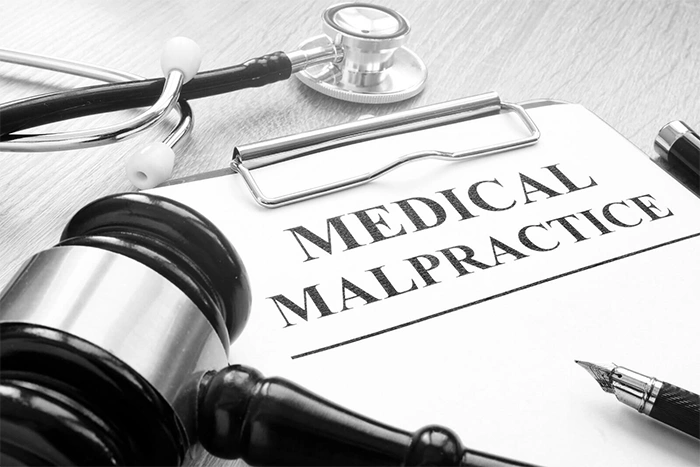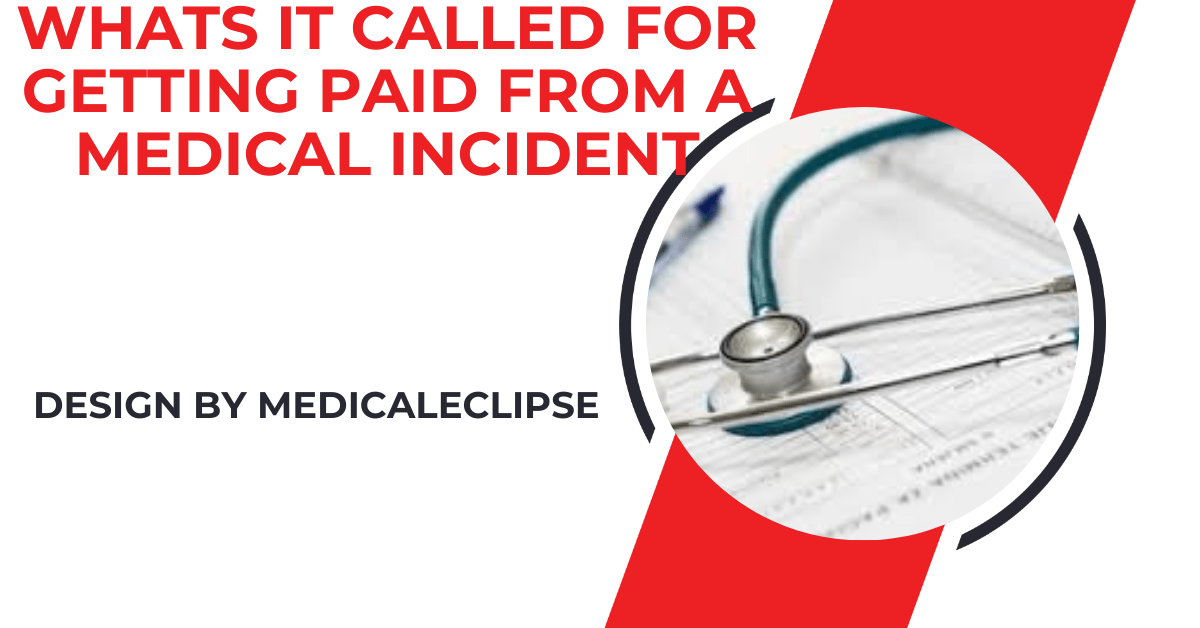You may be entitled to compensation for medical expenses, lost wages, and pain and suffering after a medical incident.
Here’s a closer look at the key types of compensation, the claims process, and important factors to consider when seeking payment after a medical incident.
Personal Injury Compensation:

Personal injury compensation is one of the most common forms of payment after a medical incident. It applies when you’ve been injured due to someone else’s negligence or wrongdoing.
This might happen in car accidents, workplace injuries, or slip and fall cases. When another party is responsible for your injury, you can seek financial compensation through legal channels.
Types of personal injury compensation include:
- Medical Bills: This covers immediate and long-term medical expenses, such as hospital visits, surgeries, medications, physical therapy, and rehabilitation.
- Lost Wages: If your injury prevents you from working temporarily or permanently, you can claim compensation for lost income.
- Pain and Suffering: Compensation for the physical pain and emotional distress caused by the injury. This can include trauma, anxiety, or reduced quality of life.
- Disability or Disfigurement: If your injury leads to permanent disability or physical disfigurement, you may be entitled to additional compensation.
How to file a personal injury claim:
- Gather evidence: Document your injuries, medical treatment, and any other expenses related to the incident.
- File a claim: This is often done through the responsible party’s insurance company or by hiring a personal injury attorney.
- Negotiate a settlement: In many cases, the insurance company will offer a settlement to avoid going to court. If the settlement is fair, you can accept it, or your attorney can negotiate for a better deal.
Medical Malpractice Compensation:

If you’ve been harmed due to the negligence of a healthcare provider, you may be eligible for medical malpractice compensation. Medical malpractice occurs when a doctor, nurse, or medical facility fails to meet the standard of care, leading to harm or injury to the patient.
Common causes of medical malpractice claims include:
- Misdiagnosis or failure to diagnose a serious condition.
- Surgical errors or mistakes during medical procedures.
- Prescription drug errors, such as incorrect dosages or dangerous interactions.
- Failure to provide adequate follow-up care or post-operative treatment.
Types of medical malpractice compensation:
- Corrective Medical Treatment: If the malpractice caused further harm, you may require additional medical procedures or treatment to correct the mistake.
- Future Medical Expenses: If the injury leads to long-term health issues, you can seek compensation for ongoing medical care, rehabilitation, and therapy.
- Loss of Income: If you are unable to work because of the malpractice, compensation can cover lost wages and future earning potential.
- Emotional Distress: Many medical malpractice cases involve significant emotional suffering, especially when the injury is severe or life-threatening.
Steps to file a medical malpractice claim:
- Consult an attorney: Medical malpractice cases are complex, and it’s essential to work with an experienced attorney who can navigate the legal system.
- Expert testimony: Often, another medical professional is required to testify that the standard of care was not met.
- Negotiate or litigate: Many malpractice claims are settled out of court, but some may go to trial if a fair settlement cannot be reached.
Workers’ Compensation:

If you’re injured on the job, you may be eligible for workers’ compensation, a type of insurance that provides benefits to employees who are hurt in the course of their employment. Workers’ compensation is a no-fault system, meaning you don’t need to prove that your employer was negligent to receive benefits.
Benefits typically covered under workers’ compensation include:
- Medical Expenses: Covers all medical treatments related to your workplace injury, including surgeries, medications, rehabilitation, and therapy.
- Wage Replacement: Provides a portion of your regular wages if your injury prevents you from working temporarily. The percentage varies depending on local laws but often ranges from 50% to 70% of your salary.
- Disability Benefits: If your injury results in a permanent disability, you may be entitled to long-term disability benefits, either partial or total, depending on the severity of your condition.
- Vocational Rehabilitation: Some workers’ compensation policies include vocational training to help you return to work or transition into a new role if you are unable to continue in your previous position.
Filing a workers’ compensation claim:
- Report the injury: Notify your employer of your injury as soon as possible.
- See an approved doctor: Many workers’ compensation systems require you to be evaluated by a doctor approved by your employer’s insurance.
- File a claim: Your employer or their insurance company will typically assist you in filing a workers’ compensation claim.
Insurance Payouts:
Another way to receive compensation after a medical incident is through insurance payouts.
Depending on the type of incident, different types of insurance may come into play:
- Health Insurance: Covers medical expenses related to your treatment, such as doctor visits, hospital stays, surgeries, medications, and rehabilitation.
- Auto Insurance: If the medical incident involves a car accident, the at-fault driver’s insurance may cover your medical expenses. In some cases, your own auto insurance (through personal injury protection or uninsured motorist coverage) may also provide compensation.
- Disability Insurance: If the injury or incident leads to a long-term or permanent inability to work, disability insurance can provide financial support.
Insurance payout process:
- File a claim: Contact your insurance provider and provide the necessary documentation to file a claim.
- Negotiate: Insurance companies may attempt to minimize payouts. Be prepared to negotiate or consult an attorney if the offered payout does not cover your full expenses.
- Receive payment: Once your claim is approved, the insurance company will issue a payout either as a lump sum or through scheduled payments.
Pain and Suffering Damages:
Compensation for pain and suffering refers to the non-economic damages you endure after a medical incident. Unlike medical bills or lost wages, which are easy to quantify, pain and suffering is more subjective and includes both physical pain and emotional distress.
Factors considered when calculating pain and suffering damages:
- Severity of the injury: The more severe and long-lasting the injury, the higher the potential compensation for pain and suffering.
- Impact on daily life: If the injury affects your ability to live a normal life, such as participating in hobbies, spending time with family, or performing daily tasks, compensation may increase.
- Emotional trauma: Injuries that cause significant emotional or psychological distress (such as anxiety, depression, or PTSD) may lead to higher compensation.
Pain and suffering damages are often part of personal injury or medical malpractice settlements. The compensation amount varies significantly depending on the case, and it may be negotiated as part of the overall settlement.
Structured Settlements:
Instead of receiving a lump sum payout, some individuals opt for a structured settlement. This involves receiving regular payments over time, which can provide long-term financial stability, especially for individuals with significant medical needs or ongoing expenses.
Advantages of structured settlements:
- Steady income: Payments are spread out over months or years, ensuring a reliable income stream.
- Tax benefits: Structured settlements are often tax-free, which can provide a financial advantage over a lump sum payout.
- Financial planning: A structured settlement can help you manage large amounts of money more responsibly, avoiding the risk of quickly depleting a lump sum payment.
Structured settlements are commonly used in large personal injury or medical malpractice cases, particularly when long-term care or rehabilitation is required.
FAQ’s
1. What is personal injury compensation?
Personal injury compensation covers medical bills, lost wages, and pain and suffering when you’re injured due to someone else’s negligence, like in car accidents or workplace injuries.
2. How do I file a medical malpractice claim?
You should consult an attorney, gather evidence, and often require expert testimony to prove that a healthcare provider failed to meet the standard of care, causing harm.
3. What does workers’ compensation cover?
Workers’ compensation provides benefits for medical expenses, wage replacement, and rehabilitation if you’re injured on the job, regardless of employer negligence.
4. How does pain and suffering compensation work?
Pain and suffering damages cover non-economic losses like physical pain and emotional distress, often included in personal injury or medical malpractice settlements.
5. What is a structured settlement?
A structured settlement involves receiving regular payments over time rather than a lump sum, providing long-term financial stability, often used in large personal injury cases.
Conclusion
Receiving compensation after a medical incident can vary based on the situation, whether through personal injury claims, workers’ compensation, or medical malpractice. It’s essential to understand your rights and options, and legal advice can help ensure you get the full amount you’re entitled to. Knowing the process will help secure the financial support needed for your recovery.

Leave a Reply